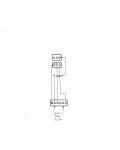This is my first pool and it'll be a year in April. It's a 17 x 35 (approx 18,000 gal) diamondbrite located in Miami, FL. I refill the pool from my well pump. The pool is open basically year-round and I believe that the previous owner was using chlorine tabs w/stablizer for the most part.
I've been struggling to maintain the chlorine levels in the pool and more often that not I test and there's little to no FAC/TAC.
I went into my local Leslie's for this first time this weekend (I had been using another store that's closer) and here's what the water analysis form says:
FAC X
TAC 0
Bromine X
PH 7.8
TA 110
Calcium Hardness 240
CYA 100
TDS 1600
Copper / Iron X
Phosphates 2500
Salt X
What obviously stands out are the Phosphates and the CYA. Leslie's reccomended 36oz PhosFree followed by 6oz copper algaecide, then 1 qt acid and finally 3 chlor brite packages and 3 fresh-n-clear packages.
I've successfuly maintained a saltwater aquarium for a number of years. Once I understood the basic cycle (thanks Martin Moe), it wasn't that much of a challenge. However, I've had a difficult time understanding the dynamics of what's happening with the pool.
I've been struggling to maintain the chlorine levels in the pool and more often that not I test and there's little to no FAC/TAC.
I went into my local Leslie's for this first time this weekend (I had been using another store that's closer) and here's what the water analysis form says:
FAC X
TAC 0
Bromine X
PH 7.8
TA 110
Calcium Hardness 240
CYA 100
TDS 1600
Copper / Iron X
Phosphates 2500
Salt X
What obviously stands out are the Phosphates and the CYA. Leslie's reccomended 36oz PhosFree followed by 6oz copper algaecide, then 1 qt acid and finally 3 chlor brite packages and 3 fresh-n-clear packages.
I've successfuly maintained a saltwater aquarium for a number of years. Once I understood the basic cycle (thanks Martin Moe), it wasn't that much of a challenge. However, I've had a difficult time understanding the dynamics of what's happening with the pool.


